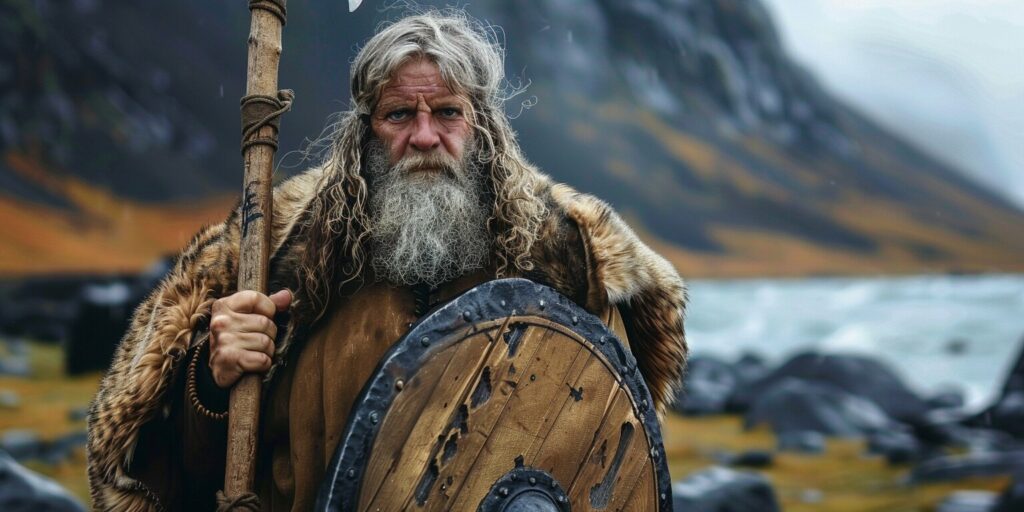Viking Heritage, Vikings
Are You a Descendant of Vikings? How to Discover Your Nordic Ancestry
Welcome to the fascinating world of Nordic ancestry! Have you ever wondered if you have Viking roots? Are you curious about your Nordic heritage? In this article, we will explore the signs, indicators, and genealogical methods that can help you determine if you have Nordic ancestry. By identifying the traits and characteristics associated with Viking lineage, you can embark on a journey of self-discovery and connect with your Scandinavian roots. Join us as we delve into the exciting world of Nordic genealogy and guide you on how to tell if you have Nordic ancestry. Let’s begin the adventure together!
What is Viking Ancestry?
Understanding the concept of Viking ancestry allows us to unravel the rich tapestry of Nordic heritage and its unique traits. The Vikings, renowned for their seafaring prowess and explorations, left a lasting impact on history. To grasp the essence of Viking ancestry, it’s important to delve into the characteristics associated with Scandinavian lineage.
Nordic heritage traits encompass various physical and cultural aspects. Physical characteristics often include fair or light-colored hair, blue or green eyes, and a tall and sturdy build. Though not exclusive to Viking ancestry, these traits can provide useful indicators.
Culturally, Scandinavian ancestry characteristics reflect the Vikings’ way of life. The Vikings were known for their adventurous spirit, love for exploration, and expert shipbuilding skills. They left behind a legacy of craftsmanship and excellence in trade, demonstrating their enterprising nature.
Historical Context and Viking Culture
The historical context surrounding Viking ancestry dates back to the late 8th century to the 11th century. During this time, the Vikings embarked on daring voyages, sailing across vast waters to settle in new lands and trade with distant civilizations. Their journeys reached as far as North America, the Middle East, and even Africa.
The Viking culture was shaped by their polytheistic religion, with gods such as Odin, Thor, and Freya playing significant roles in their beliefs. Their mythology, folklore, and sagas contribute to the rich heritage passed down through generations. Exploring these narratives can provide valuable insights into Norse traditions and help establish familial connections.
The Significance of Viking Ancestry
- Identifying Viking ancestry can foster a deeper sense of connection to one’s roots and heritage.
- Understanding Nordic heritage traits can shed light on family traditions and cultural practices.
- Viking ancestry can serve as a source of pride, as it reflects the resilience and bravery of our ancestors.
- Discovering Viking roots can help one appreciate the Vikings’ historical impact and contributions to society.
By exploring the concept of Viking ancestry and familiarizing ourselves with the traits and characteristics associated with Nordic heritage, we can embark on a journey to discover our own Viking roots. Whether it confirms a direct descent from the Vikings or reveals a broader Scandinavian heritage, the exploration of our ancestral past connects us to a captivating chapter in history.
Signs of Nordic Ancestry
Are you curious about your family’s origins and whether you have Nordic roots? In this section, we will explore the signs and indicators that may suggest you have Viking ancestry or a Scandinavian lineage. Recognizing these signs of Viking ancestry can give you valuable insights into your family’s history and heritage.

1. Physical Traits
- Blonde or red hair
- Blue or green eyes
- Fair or light complexion
- Tall stature
- Prominent cheekbones
While these physical traits are not exclusive to individuals of Nordic descent, they are commonly associated with Viking ancestry and can be indicative of Scandinavian lineage.
2. Cultural Practices
- Traditional Nordic names
- Family stories and folklore with Viking connections
- Interest in Scandinavian history and culture
- Celebrating Nordic holidays and traditions
- Participating in Norse mythology and Viking reenactments
Engaging in cultural practices rooted in Norse mythology and Viking traditions can strongly indicate Nordic ancestry.
3. Geographic Origins
If your family originates from or has connections to Scandinavia, particularly countries like Norway, Sweden, Denmark, Iceland, or Finland, there is a higher likelihood of having Viking or Scandinavian ancestry.
4. Genealogical Research
Tracing your family tree and conducting thorough genealogical research can provide valuable clues about your Nordic ancestry. Look for records that indicate Scandinavian origins, such as birth certificates, immigration records, and historical documents.
Combining these various signs and indicators can paint a clearer picture of your family’s heritage and determine if you have Viking or Scandinavian roots. While individual signs may not conclusively prove your Nordic ancestry, they can collectively contribute to a compelling narrative of your family’s history.
Tracing Your Viking Roots
Discovering your Nordic ancestry is an exciting journey that involves tracing your Viking roots. By exploring various resources and methods, you can uncover the clues that will help determine your Nordic descent.
Genealogical Research
Genealogical research is a vital tool in uncovering your Nordic family history. Start by gathering information from your immediate relatives, such as parents, grandparents, and great-grandparents. Record their names, birthplaces, and any stories or anecdotes they may have shared about their heritage. This will provide a solid foundation for your research.
Utilize online databases and genealogy websites that specialize in Nordic ancestry. These platforms can offer valuable records, such as birth, marriage, and death certificates, census data, and immigration records. Be sure to cross-reference multiple sources to ensure accurate information.

DNA Testing
Another effective method for determining your Nordic descent is through DNA testing. Companies like 23andMe, AncestryDNA, and MyHeritageDNA provide DNA testing kits that can reveal your genetic heritage.
These tests analyze your DNA and compare your genetic markers with reference populations to determine your ethnic origins. You may receive a breakdown of your ancestry by region, including Scandinavia, which can provide valuable insights into your Nordic roots.
Historical Records
Delving into historical records can also offer valuable clues about your Nordic family history. Explore immigration records, passenger lists, and naturalization documents to trace your ancestors’ migration paths and settlements.
Additionally, consult local government records, church archives, and historical societies that specialize in Nordic ancestry. These resources may contain birth, marriage, and death records, as well as historical documents that shed light on the lives of your Viking ancestors.
By following these steps and utilizing the available resources, you can better understand your Nordic ancestry and confidently trace your Viking roots.
Can You Test for Viking DNA?
When it comes to discovering your Nordic heritage, one avenue that holds immense potential is DNA testing. Advancements in genetic research have allowed individuals to gain valuable insights into their ancestry and trace their roots back to ancient civilizations like the Vikings. However, it’s important to understand the limitations of such tests and evaluate if they can truly provide definitive answers about your Viking DNA.
DNA testing for Viking ancestry involves analyzing specific markers and genetic variants that are associated with Scandinavian populations. By comparing your DNA to reference populations and databases, these tests can provide indications of your genetic heritage. They can reveal the likelihood of having Viking ancestry and even pinpoint specific regions or countries where your ancestors may have originated.
While DNA testing can unveil intriguing connections to Viking lineage, it’s crucial to approach the results with caution. Identifying Viking DNA is a complex process, influenced by factors such as migration patterns, intermixing of populations, and genetic similarities among different regions. As a result, genetic tests can sometimes produce ambiguous or inconclusive results.
It’s also worth noting that DNA testing is just one piece of the puzzle when it comes to discovering your Nordic heritage. Combining genetic analysis with other genealogical research methods, such as exploring historical records and tracing your family tree, can provide a more comprehensive understanding of your Viking roots.
Ultimately, the decision to pursue DNA testing for Viking ancestry is personal. It’s a valuable tool that can offer intriguing insights into your genetic heritage and potentially connect you to the ancient world of the Vikings. However, it’s essential to approach the results with an open mind and consider them in conjunction with other research methods.
The Advantages of DNA Testing for Viking Ancestry:
- Offers insights into your genetic heritage
- Can identify connections to specific regions where Vikings lived
- Provides a scientific basis for exploring your Nordic roots
The Limitations of DNA Testing for Viking Ancestry:
- Factors like population migration and intermixing can influence the results
- May produce ambiguous or inconclusive results
- Requires additional research and analysis to gain a comprehensive understanding
Conclusion
In conclusion, exploring your Nordic ancestry can be an exciting and rewarding journey. You can uncover the truth about your Viking lineage by recognizing the signs, researching your family history, and potentially utilizing DNA testing. Whether you find direct connections to the Vikings or discover a broader Scandinavian heritage, embracing your Nordic roots can provide a deeper connection to your family’s past.

